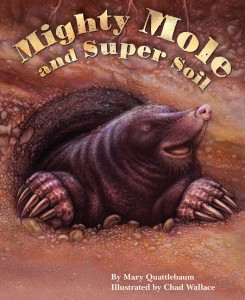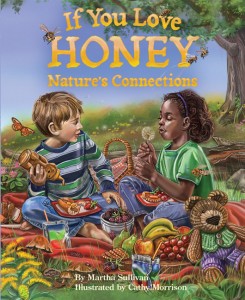Written by Mary Quattlebaum
Illustrated by Chad Wallace
In an underground world unknown to most people, moles thrive. With long, sharp claws, they move heavy objects out of the way and dig quickly through the soil. They encounter rivals for their food – earthworms, insects, snails, slugs, centipedes, and larvae – and many creatures helped by the healthy soil. Predators, such as snakes, are close but rarely a big threat to moles. The soil moles live in is alive with nutrients and microscopic creatures. Moles are even born underground, where they have everything they need. The story is compelling and well-researched, and contains many relevant facts.
Vivid illustrations give a genuine sense of living in the underground. Kids will feel like they’re with the moles – in a comfortable way.
In the “Explore More – For Kids” section, second graders are challenge to think about the world they just learned about. “I’m a reptile that can grow up to six feet long.” A list of super powers demonstrates why the star of the book is called Mighty Mole and is a superhero. In “Explore More – For Teachers and Parents,” learning activities are outlined and encouraged. Online resources are cited for more learning and activities.
 Title: Mighty Mole and Super Soil
Title: Mighty Mole and Super Soil- Author: Mary Quattlebaum
- Illustrator: Chad Wallace
- Published: Dawn Publications, September, 2015
- Reviewer: Sue Poduska
- Format: Hardcover, 32 pages
- Grade Level: PreK to 3
- Genre: Nonfiction, nature
- ISBN: 978-1584695387
- Extras: Explore More – For Kids, Explore More – For Teachers and Parents


